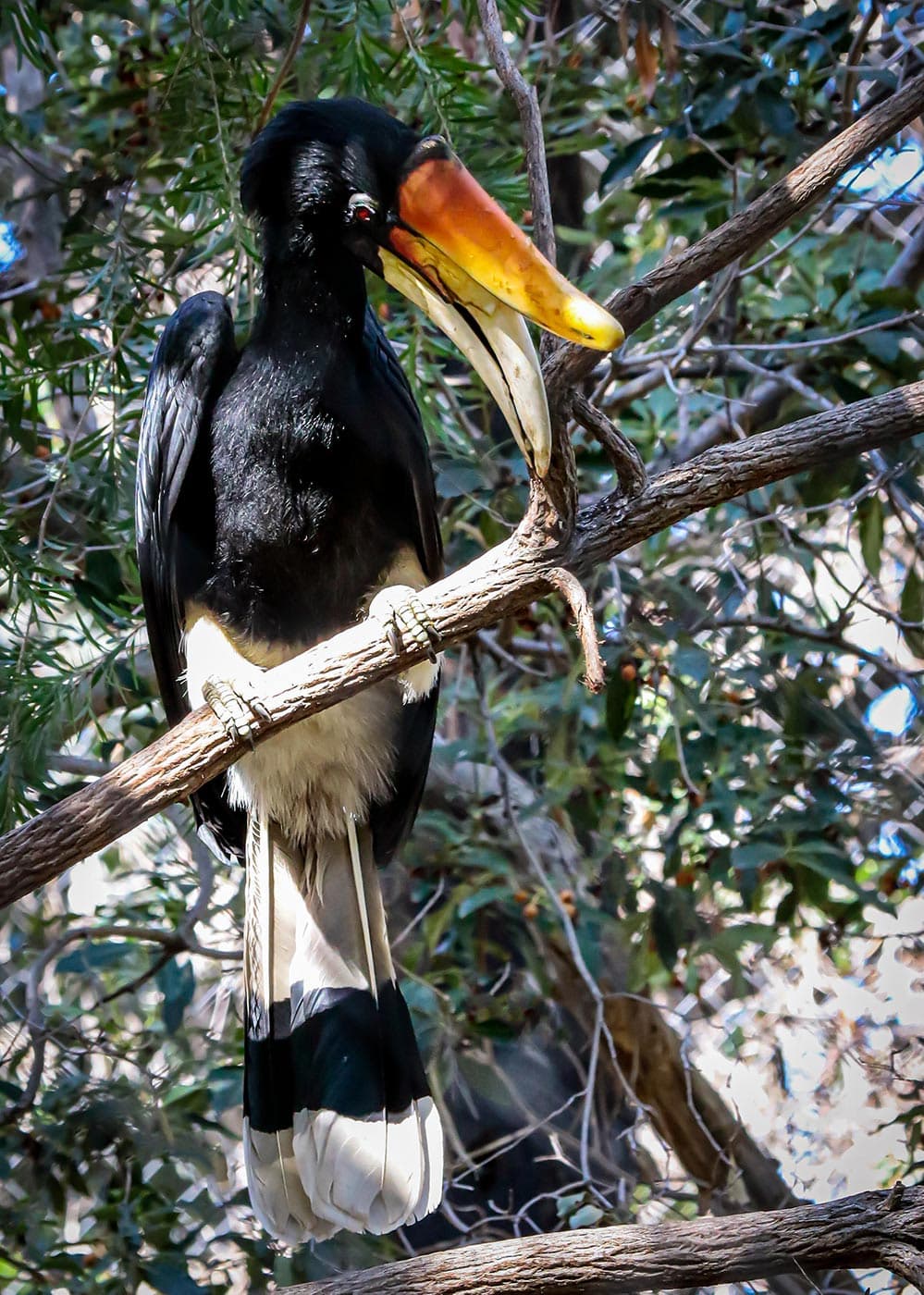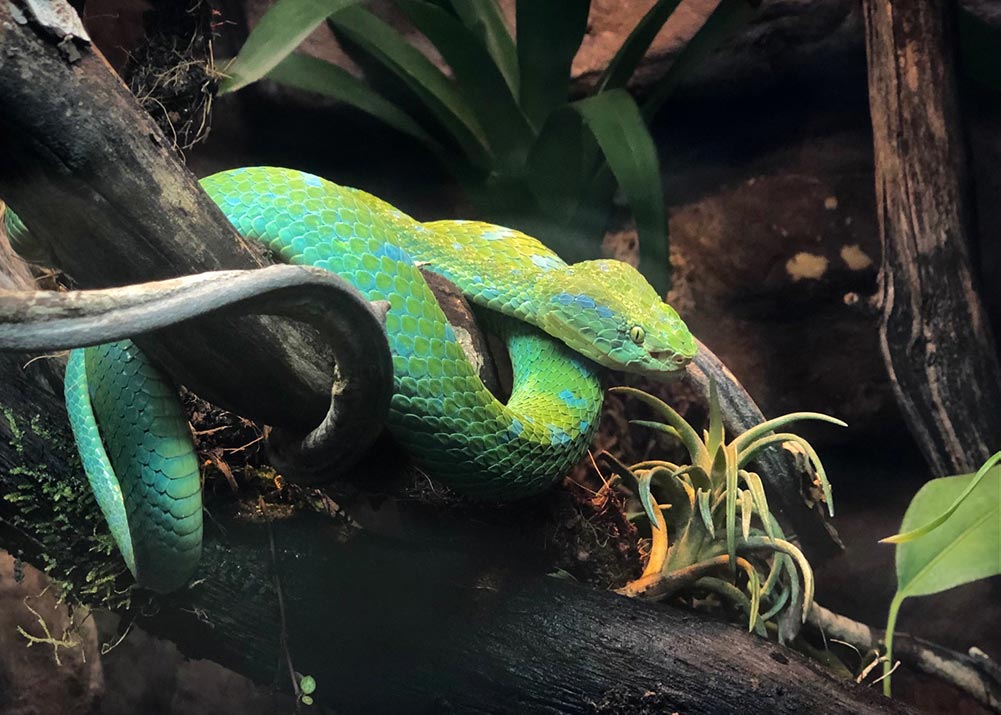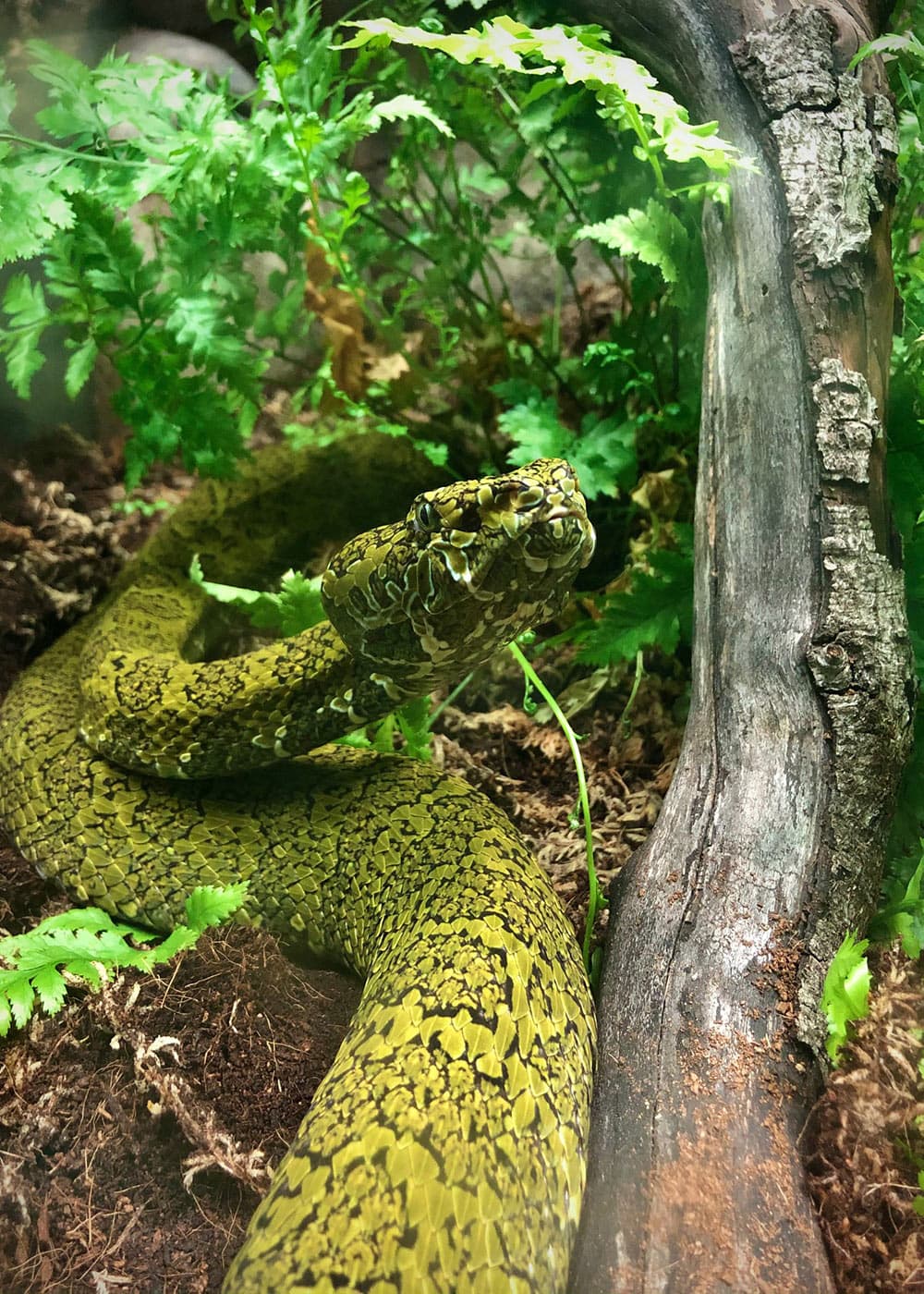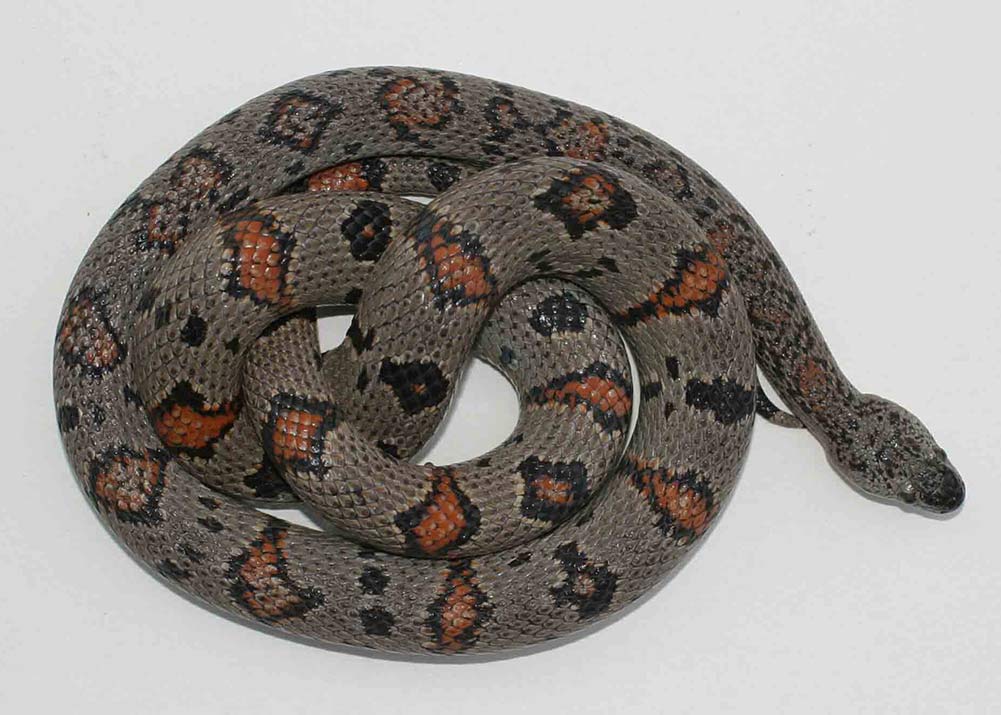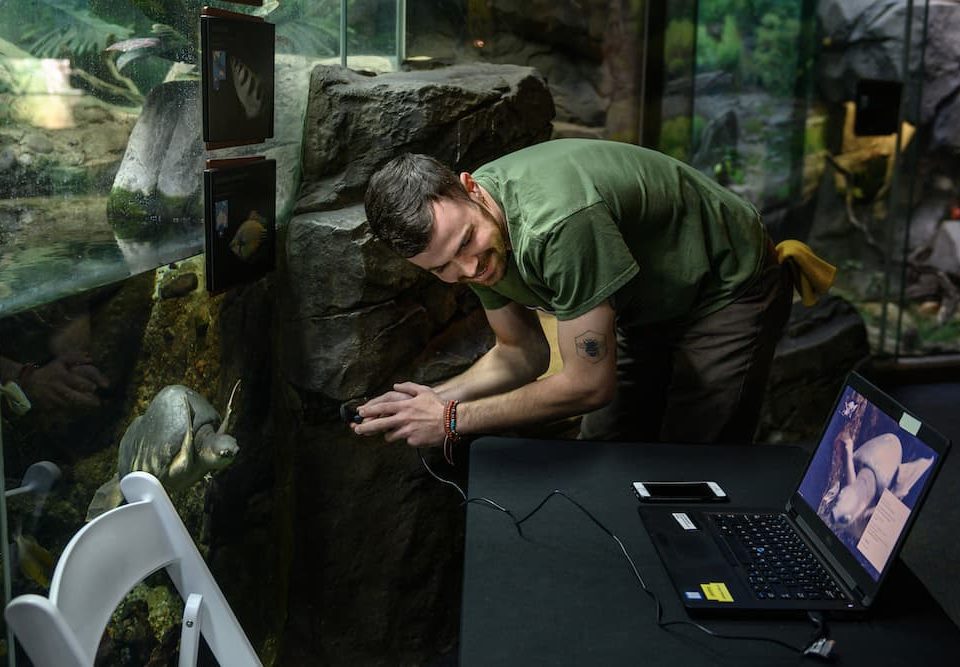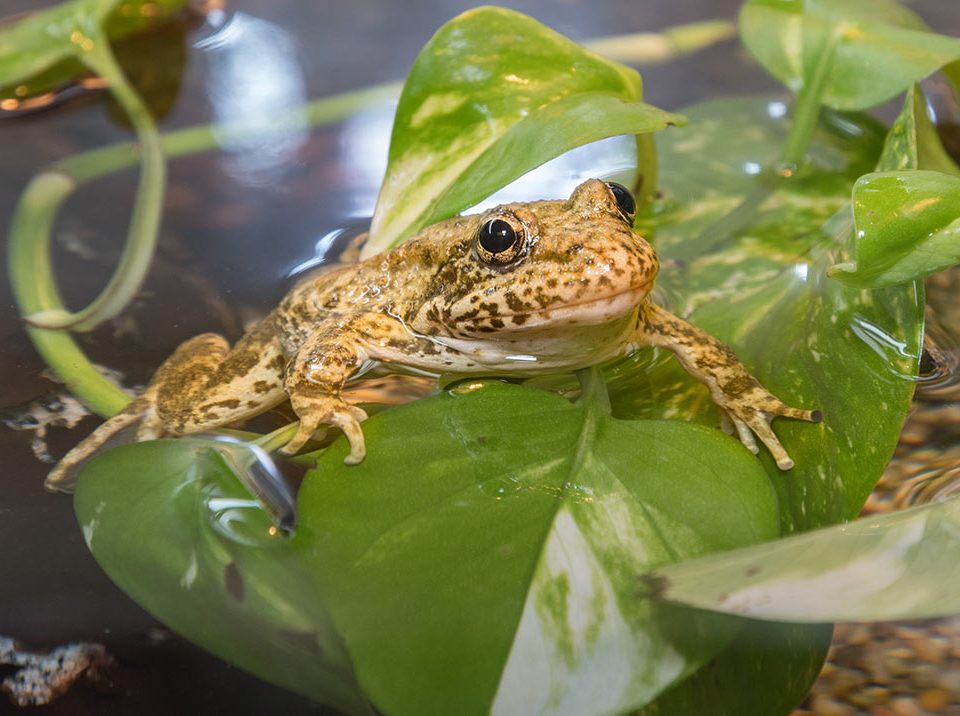News in the Zoo

Conservation Update with Dr. Jake Owens, Director of Conservation
January 1, 2021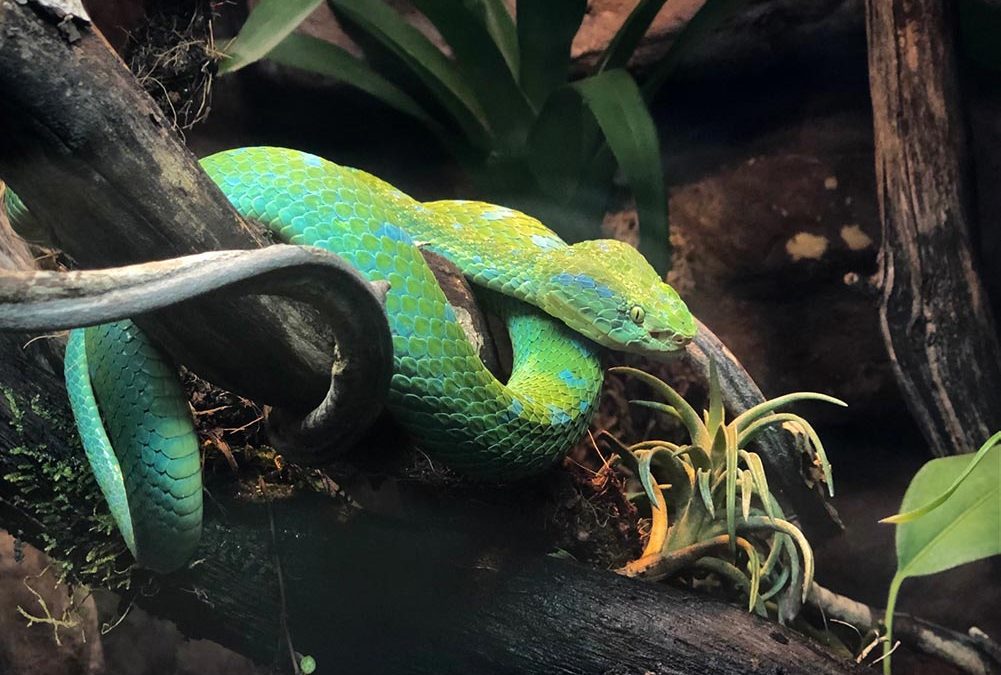
Home improvements to LAIR habitats include new UV lighting, perching, plants, and substrate. Humidifiers were added to the Mangshan Mountain pit viper habitat (right). Photos by Ian Recchio
The birding website eBird.org describes spectacled owls (Pulsatrix perspicillata) as "uncommon but unmistakable"—and the birds' unique appearance has made this species popular in zoos and falconry centers. A distinctive pattern of white feathers around their eyes gives these large, tropical owls the appearance of wearing eyeglasses. In Brazil, they are known locally as knocking owls because the males produce a loud, rhythmic call that sounds like the tapping of a woodpecker or hammering. Our current spectacled owl pair came to the L.A. Zoo in November 2017 and have so far hatched two chicks. They are incubating two eggs in their current nest.
Click here to hear a recording of two spectacled owls calling to each other in Brazil (courtesy of Xeno-Canto.org).
It is also breeding season for Cape vultures (Gyps coprotheres). The Zoo's breeding pair is starting to spend more time lingering in the nest, so keepers are watching for signs of egg laying.
A female rhinoceros hornbill (Buceros rhinoceros) from Kansas City Zoo arrived and will be paired with one of the resident males. The other male was transferred to Hemker Park & Zoo in Freeport, Minnesota. About 55 species in 15 genera make up the hornbill family. Most are large, cavity-nesting birds that subsist primarily on fruit and plant matter plus small vertebrates and insects. In addition to rhinoceros hornbills, the Zoo is also home to Von der Decken's hornbills (Tockus deckeni), wrinkled hornbills (Rhabdotorrhinus corrugatus), and Abyssinian ground hornbills (Bucorvus abyssinicus). With their often-vibrant, tropical colors and super-sized beaks, hornbills (found exclusively in "old world" regions—from Africa across India and Asia to Papua New Guinea) are similar in appearance to toucans (which are found only in the Americas). This is an excellent example of convergent evolution, where two unrelated groups of animals independently develop similar features as adaptations to similar habitat conditions or ecological niches.
In November, three California condors (Gymnogyps californianus) arrived in need of medical attention.
A male colobus monkey (Colobus guereza) who arrived from the Minnesota Zoo completed quarantine on December 9 and is being introduced to the resident females as part of a Species Survival Plan recommendation.
The Speke's gazelle (Gazella spekei) born on October 12 has joined the herd and is on view in their habitat.
A male short-nosed echidna (Tachyglossus aculeatus aculeatus) transferred in from the Living Desert Zoo and Gardens and a female Roti Island snake-necked turtle (Chelodina mccordi) arrived from the Columbus Zoo.
The LAIR may be closed to the public for the time being, but Zoo herpetology staff remain busy caring for its many residents and making sure that all is in readiness for the time when it will be open to visitors again. Revamped habitats include the homes of two very rare viper species—Rowley's palm viper (Bothriechis rowleyi) and Mangshan Mountain pitviper (Protobothrops mangshanensis). Also, Mexican gray-banded kingsnakes (Lampropeltis alterna) have been introduced into a Desert LAIR habitat, the first time this species has been on view at the Zoo since the early ’90s.



